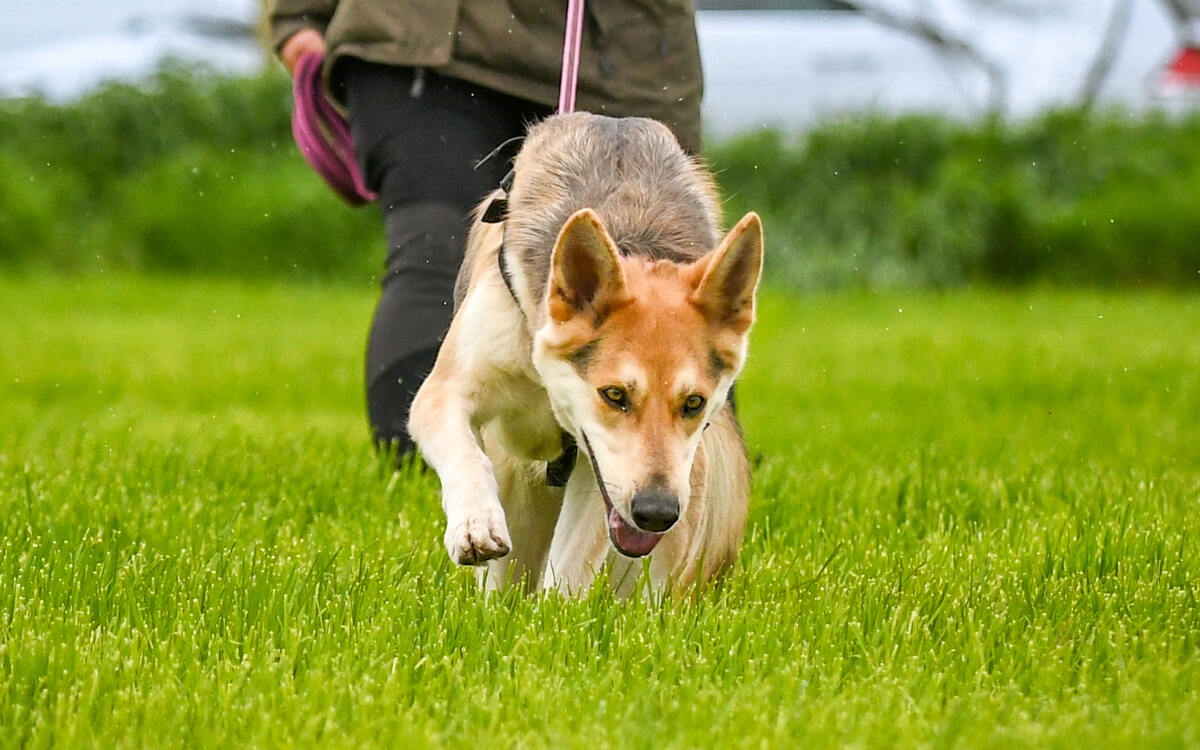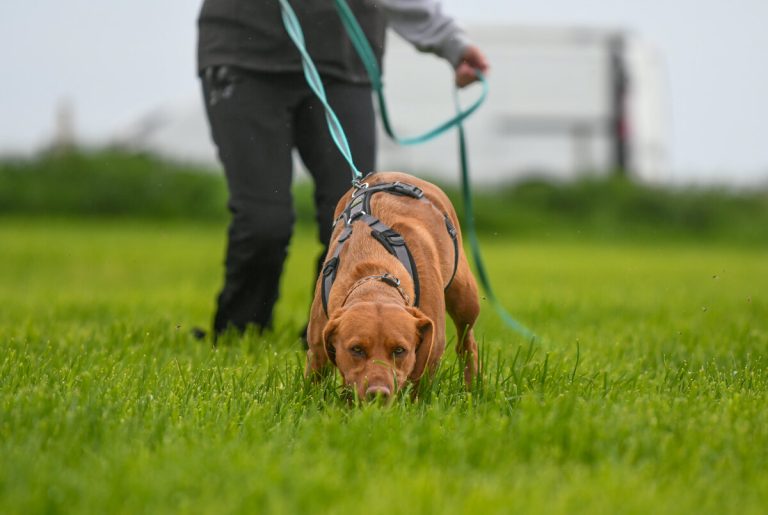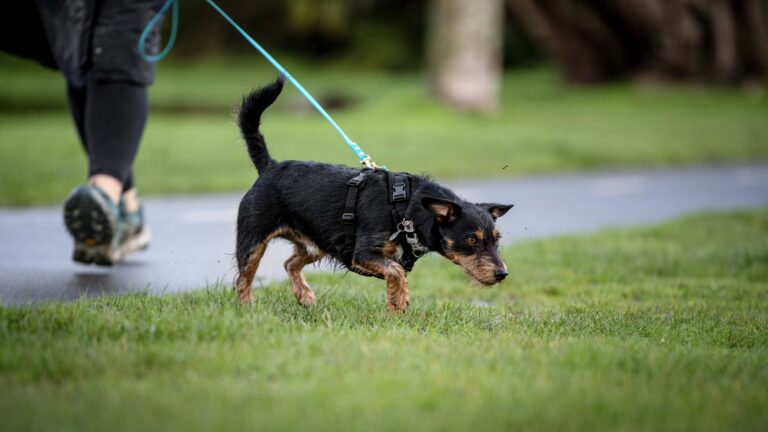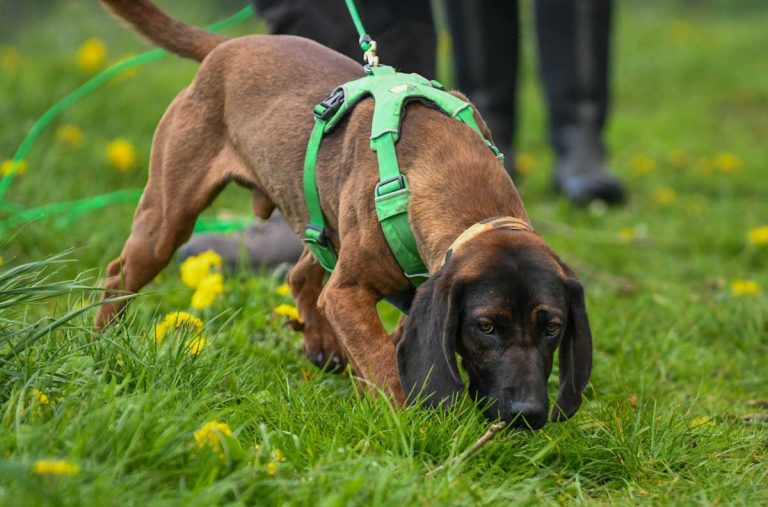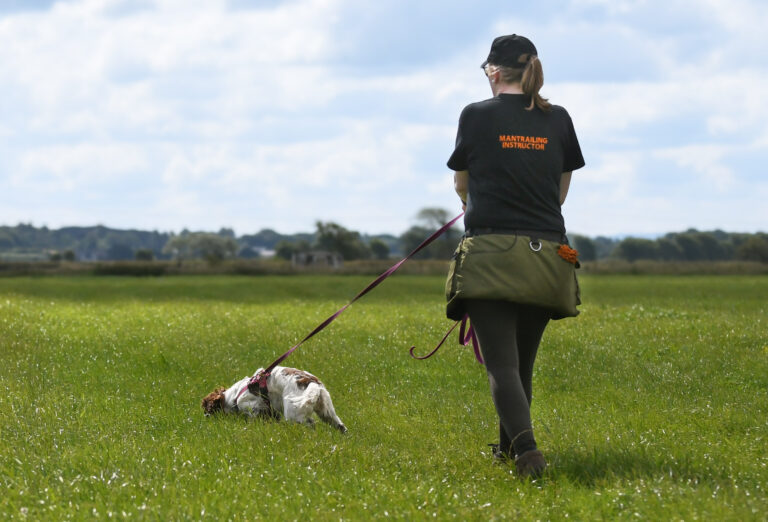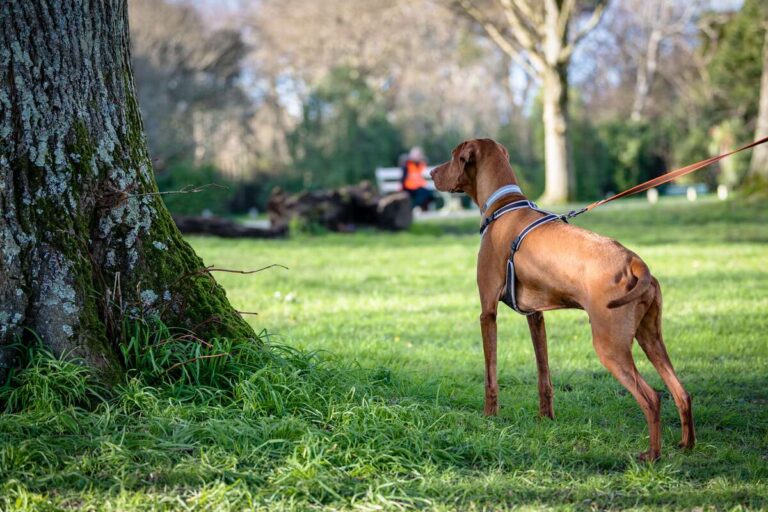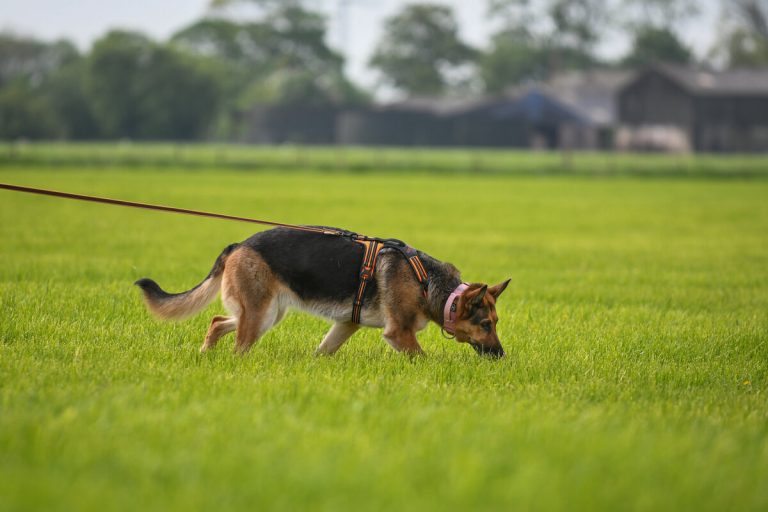Arousal in the Mantrailing Dog
In mantrailing we often make the mistake to think that working with lots of intensity is the best way to create success, but this means arousal and over arousal is a big issue in all dog training not just mantrailing.
But when does the intensity start to hinder your dogs mantrailing success by becoming arousal?
Intensity is the trail layer getting the dogs attention prior to leaving to hide out of sight, this is by showing them the food or toy, calling the dog and then leaving swifty out of sight. The dogs natural prey drive and curiosity drive them forward to find the person with their goodies.
The description of intensity indicates that this is usually very exciting for the dog as we want the dog to really want to find the hidden person.
Intensity can really hinder a dog’s progress as they quickly hit a point they cannot work effectively as they are too excited or stressed about finding their trail layer.
We’ve all had sessions where the dog has seemed totally unable to focus or progress, and it feels like a set back. But really it is a mismatch of arousal and focus in the dog while problem solving.
What is Arousal in Mantrailing?
It is where the dog is so excited to find the trail layer that the dog is experiencing a physical and physiological response to the trail layer leaving, or to the ritual at the start of the trail.
They act excited. Some dogs may show just an open mouth with the tongue lolling out, giving them that daft look. Other dogs may be panting, jumping up, or crying incessantly.
Alternatively, a highly aroused dog may freeze and become fixated on the scent article or just getting started on the trail the person took ignoring the scent article completely.
They are stressed.
Sometimes in a good way, but other times in a bad way.
The good type of stress is called eustress, which is positive stress with potentially negative implications.
In human terms, we can feel this when in highly exciting situations like going to a concert, the body is stressed about the excitement.
The emotional response to negative things and positive things is different, but the physiological response is the same. This stress hormone, cortisol, stays in the system for a long period of time which can impact other things.
It is also a release for dopamine, the habit forming hormone.
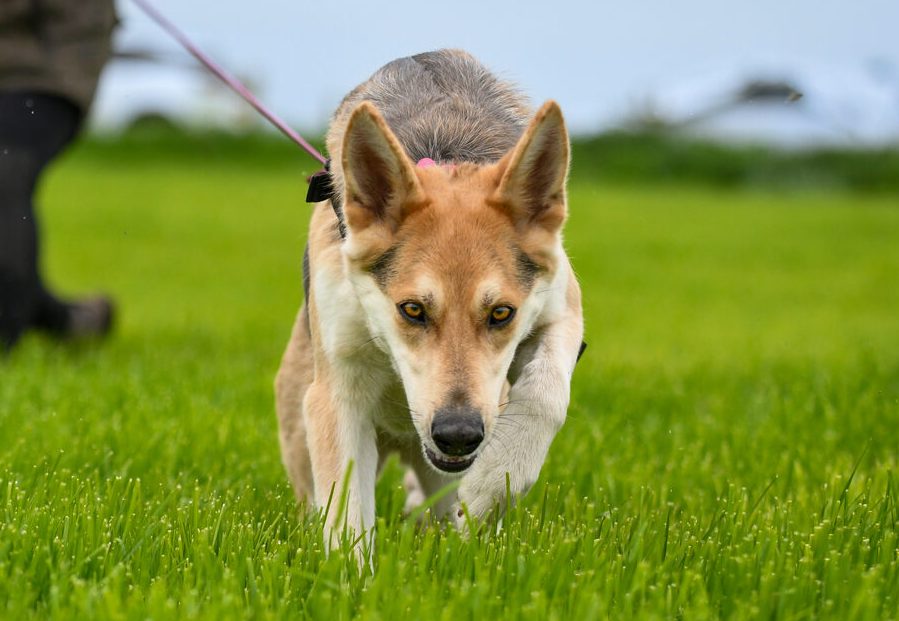
How is the Arousal going to Affect my Mantrailing Dog?
In mantrailing we attract a lot of “high drive” breeds looking for a safe outlet for the chaos. As mantrailing is on lead, each dog is worked individually and it is a great way to tire the brain as well as the body.
If you do lots of intensity and fire the dog up too much, it will start to build the triggers for stress in the dog even before they have started to work and encounter any problems.
Does your dog get way over excited with the starting ritual or even when you put the harness on? The dog is chomping at the bit to get started?
This could be over arousal.
Another example over arousal is the dogs which blow junctions on wisps of blown scent. The keen but inaccurate dog. They could also be “ghosting” (Looking like they are trailing but really they have lost the scent, or never had it to begin with) the trail as well as the dogs just tiring out really quickly.
It’s usually when you see the dog pulling like a train, looking like it’s on the trail so well and perfectly, when in reality the dog lost the trail behind them.
This is common behaviour in Spaniels, and one of the reasons people find them so hard to read when mantrailing.
They become desperate to find the trail layer, and the stress gets worse and worse.
This is usually where you start to reach the plateau of the dogs progression and start to hit the ceiling.
This frustrates us as a handler, and creates tension as a team.
Is Intensity Bad in the Mantrailing Dog?
Absolutely not. You need to build intensity to build reward in the trail layer, as well as the game. Intensity also builds a dopamine cycle in the dog, which produces the feel good feeling in the dog and the need to do it again.
It is important to do for so many dogs, and many dogs need it to have fun mantrailing. It is part of the reason they get so hooked on it quickly, but there are times when the intensity will cause issues in some dogs.
Building the intensity for the dogs should be very specific to that dog, some dogs need visuals on the trail layer to get started, others just naturally use their noses.
Sometimes a toy as the reward builds too much arousal and anticipation for the dog, other times it is the perfect way for the handler to reward the dog at the end to reduce the tension and provide an outlet for the dog’s natural behaviour and reduce arousal.
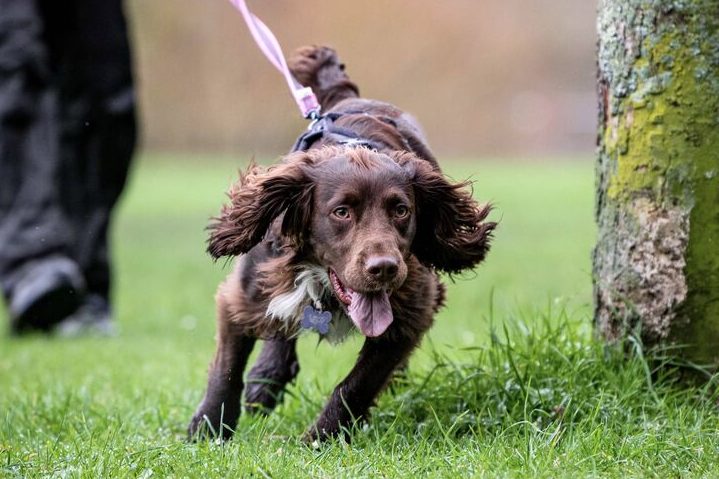
Arousal vs Success?
So how do we use this arousal to build success in the mantrailing dog? Because for many dogs this arousal is the foundation of their career in mantrailing.
The Yerkes-Dodson Law is the relationship between Arousal and Performance. As the dog’s arousal increases, so does their performance, until the optimum level is achieved. Peak arousal for success.
Then after this point if the arousal increases, the performance will start to decrease. This is usually where we do one too many intensity trails or over excite the dog on a trail. They always say stop on success and not chase for more reward.
But as handlers we often chase the dopamine as much as dogs, and out success is interlinked in the dogs. So we do just one more and start to plummet the dog into over aroused.
When the dog is at the peak arousal level the dog is able to tap into his natural drive and energy is focused and directed at performance, the mantrailing dog is on top of the world and is able to find the person with ease in most cases. The handler and dog are a team. It feels effortless.
At this point, FOCUS is at it’s peak.
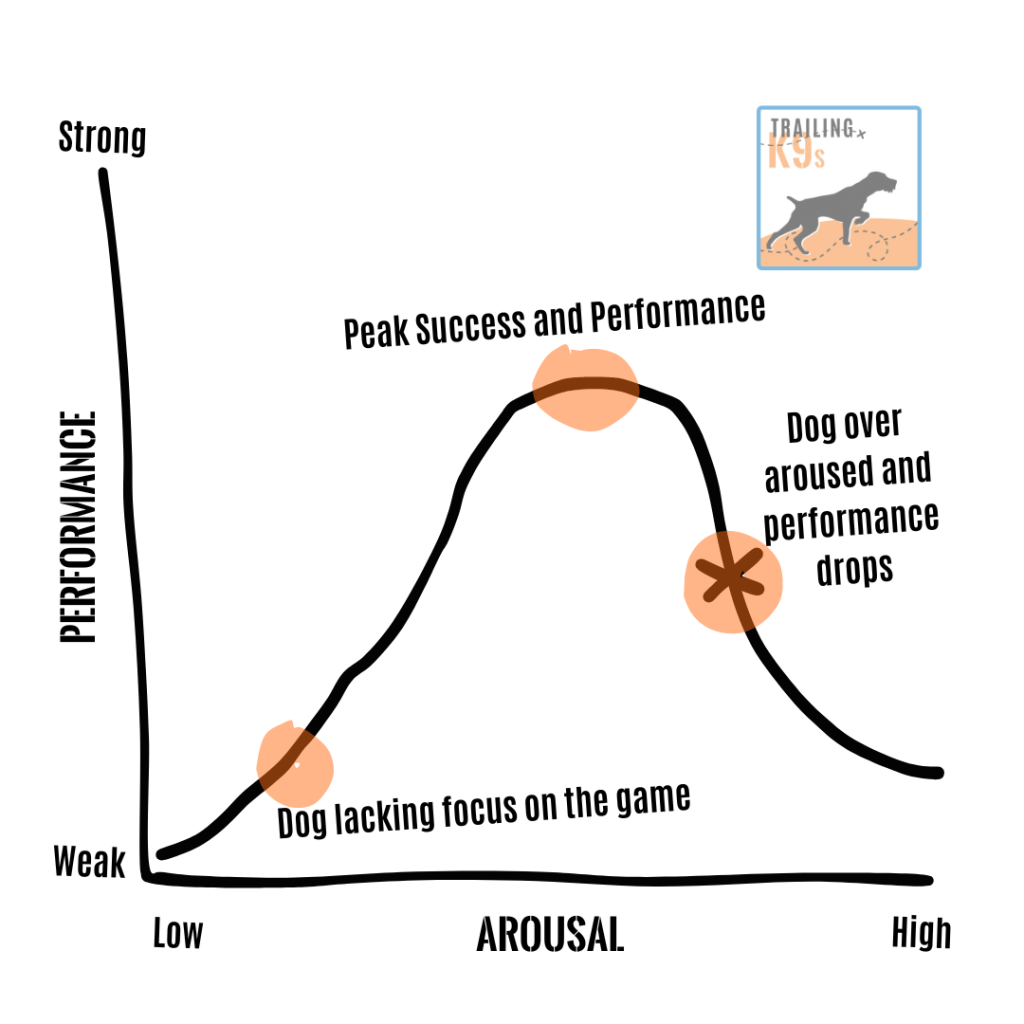
The curve can give us a helpful visual to understand where your dog might be on that scale.
Some dogs are working up the left side for a long time and reach the peak over the course of months or years, they tend to stay there as well and fall back a little when there isn’t enough fun in the game. Usually when we provide harder starts and forget to revisit foundations like intensity starts or making sure the reward is the correct reward for the dog now.
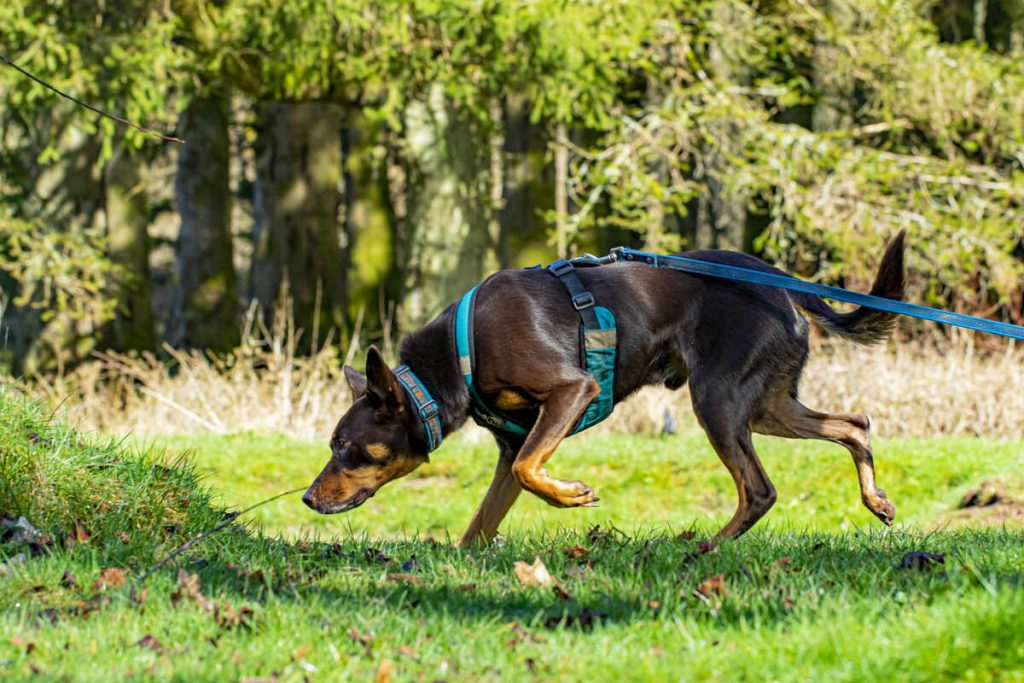
The dogs who tend to throw themselves off the cliff on the right handside are the ones I am more concerned with in this article.
They are the dogs who get the game almost instantly and excel quickly. The dogs who you cannot put a foot wrong, they just get the game. They climb fast and crash hard, and tend to yoyo between success and failure.
This dog is constantly in a high arousal state and its need to have success at all costs leads to the aforementioned issues.
These dogs suddenly become desperate for success.
Some of the methods would suggest returning to more intensity to build focus and increase reward in the trail layer. This for me is the wrong thing for these dogs who are constantly hour arousal.
Often called high drive dogs, they are often just high arousal and actually need the game explaining to them in a lower arousal way. Exercises in searching skills away from mantrailing and working on tracking without a person at the end will build success in a lower arousal state, which will transfer to mantrailing.
Just like learning to drive in a town, you become comfortable in the skill of driving before hitting a motorway.
We can create exercises which compliment our dogs skills in mantrailing and build success in a lower arousal state. This is by essentially creating new habits for the dog as well as better emotional responses.
Management is also key, which can be removing the scent inventory or reducing the triggers of stress pre mantrailing.
Or adding obedience as part of the start of the trail to get the dog to focus and their brain to settle into the task. A sit before being harnessed or a stay before going can make the difference in a high arousal dog.
It is also by working with an instructor which understands high arousal dogs, and their “success” is not always dragging their handler through bushes to get to the trail layer.
As a handler and instructor with both high arousal dogs and low arousal dogs, I am constantly assessing if my dogs are climbing the peak or ready to fall off it. This goes for all types of dog training I do with them, not just mantrailing.
From Manic Mantrailer to Methodical Mantrailer in some small changes.
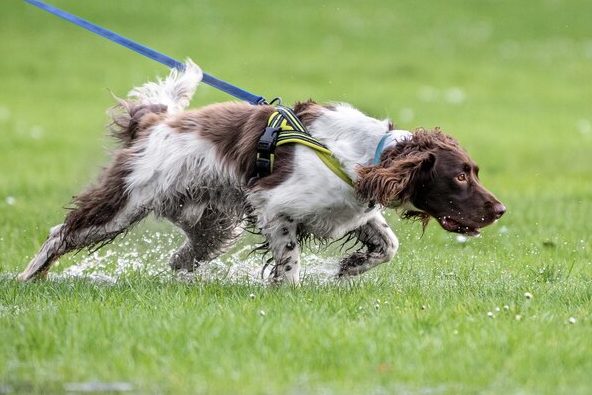
Does your dog sound like a high arousal mantrailing dog? Then get on a workshop with me and find some more solutions to the issue.
The video below will offer even more insight into the arousal in the mantrailing dog, and some solutions for your dog.

